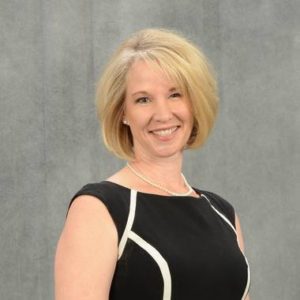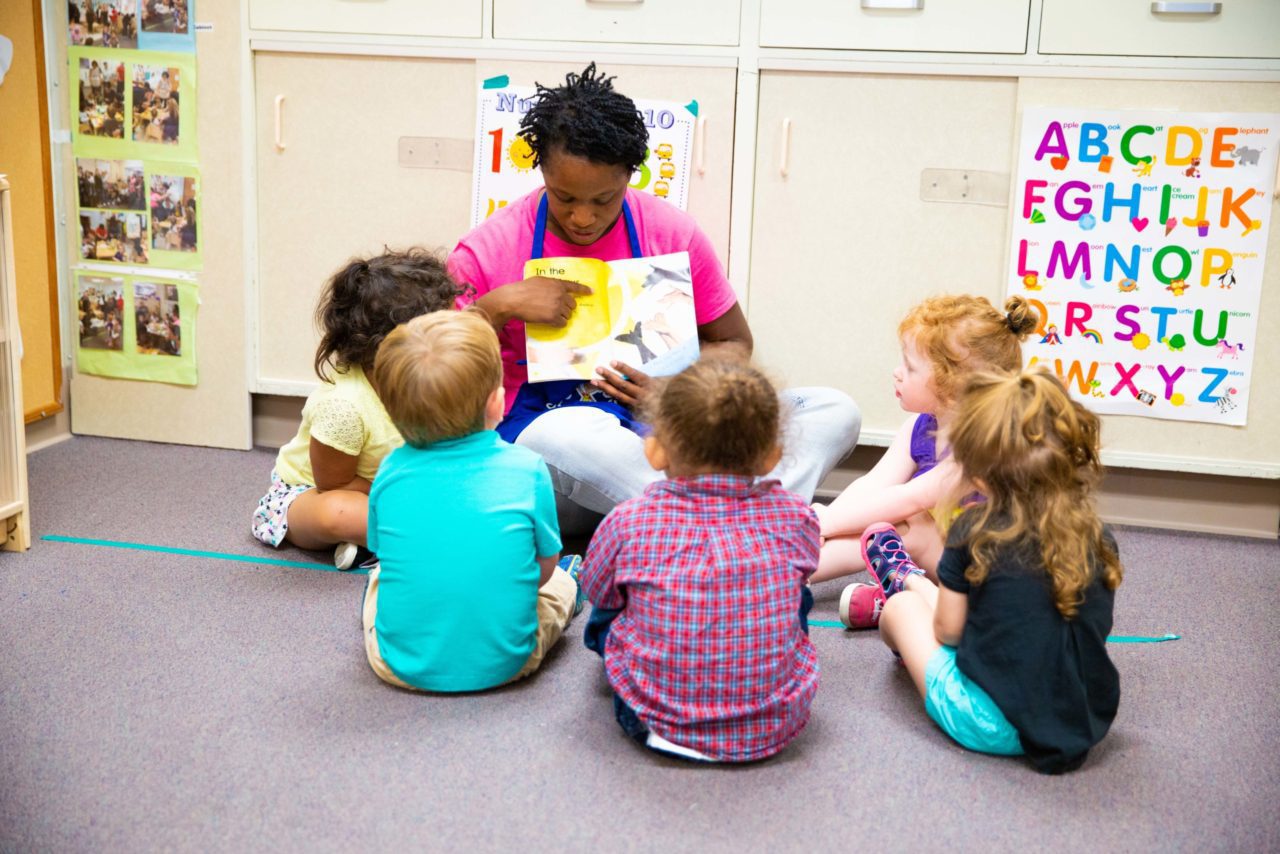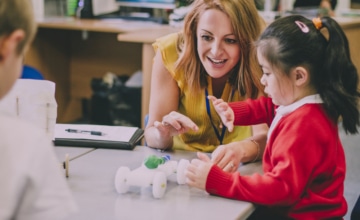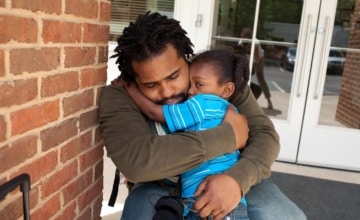by Melissa M. Jozwiak, Texas A&M University

In an effort to help children succeed, states have been working for over a decade to fashion strong early education systems. And yet, even prior to the pandemic, early education was called a broken system that has the potential to collapse without comprehensive public and private support for the system. The fragile nature of the system has been argued to be due to: (1) the high cost of providing quality early education: a cost that is far higher than families can afford to pay; (2) a lack of a sufficient funding system that would result in livable wages for the professionals who work in the field; (3) extensive quality deserts that leave most families accepting whatever care is available rather than being confident they are receiving high-quality care for their child; and, (4) the absence of cohesive and coordinated organizational approaches to improving the quality of early education.
But systems are only as effective as the people who live and work within them:
- the children and families who receive services from early education providers,
- the staff employed by the providers (including assistants, teachers, and directors),
- support staff who provide specialized services to children and families (physical therapists, speech therapists, social workers, mental health counselors, etc.), and
- the advocates who work across all areas to promote positive change in access to quality care.
If early education systems are not designed from a relationship-centered perspective, they will likely fail many of the children and families they are designed to serve.
My research on continuity stemmed from a conversation with teachers who were practicing continuity of care and were struggling with knowing it was a good practice for children, but troubled by how it affected them as individuals. The complex and sometimes conflicting ideas expressed in this conversation led to a research study that included interviewing more than 100 individuals—teachers, administrators, families, and advocates—all affected by early childhood systems. The results have convinced me that system designers and decision-makers must do a better job of elevating and attending to the people and nurturing relationships between the people they are charged with supporting.
Especially now, as billions of dollars in pandemic recovery funds are being infused in early education and system-building work, it is critical that system-building is, at its core, rooted in human relationship. Using quotes from participants in my study, the sections that follow will look at how both individuals and relationships affect the quality improvement initiatives that are typically included in system-building work: (1) Quality Rating Improvement Systems (QRIS), (2) professional development standards, (3) data systems, and (4) early learning indicators.
QRIS
QRIS are designed to improve various aspects of early education including the qualifications of the teacher; the quality of the early learning environment; and the ways teachers, children, and families interact. They set criteria for and assess early childhood settings with the intention to make improvements and create a way to communicate to others about the quality of the program. For example, the assessment may result in a numeric score that ranges from 1 for low quality to 4 for high quality. QRIS often begin where minimum standards for child care licensing leaves off; and, whereas licensing is intended to prevent harm from coming to children, QRIS programs are intended to create high-quality settings. Not all attempts to at QRIS have resulted in high-quality early learning environments. The reasons for this are twofold; the standards and practices listed in the QRIS may not reflect best practices for early education or they may not be implemented consistently. For example, one QRIS evaluator shared this story.
It boggles my mind that programs can just put on a show. I was working as coordinator of a community QRIS through our regional Training and Technical Assistance program. Child care centers would volunteer to be part of this program. I would visit a center and work with the director, and everything would seem good. But then I would talk to parents who called our Child Care Information and Referral Agency looking for a quality program. I’m talking up this program, and they’d say, “That’s where my child is now, and this is not what I see.” It was like the director was pretending just to put on a show for me. I started to “drop in” but as soon as someone saw my car, things inside the center would change.
I parked down the road to walk in without notice, but that didn’t work either. I couldn’t pull the center out of QRIS, because of what I never saw. It burns me still. I had no control. You get to a certain professional level yourself, and you really care about quality and what is best for children and families. I could not make this situation better and couldn’t decide whether to keep trying or get the heck out of there.
Professional Development Standards
The rationale behind implementing standards for teacher’s education or professional development is twofold. First, education is founded on an agreed-upon core knowledge that binds the profession. Second, it ensures everyone in the profession has that core knowledge and implements it within their early education contexts. While there is conflicting research on how credentials and degrees impact children’s learning, professional organizations overwhelmingly promote degree attainment. One challenge to the common body of knowledge for the profession is the essential role that family and community funds of knowledge play in children’s growth and learning. Professionals who work in early education systems can affect children and families positively only if they hold a deep understanding of how children grow and then develop responsive classroom practices that will support them and their families in these early years. Thus, the early childhood system rests on leadership skills and commitment to the local community, not just on a degree or the core knowledge reflected in early learning standards and best practices. Successful system development demands a disposition that is committed to developing relationships and the skills to carry it out. The next story shows how critical relationships are not only to the child’s growth, but to the ability of the teacher to be congruent with community and cultural ways of being.
You call someone by her last name— (“Mrs. Jones”)— the deeper into the community she is and by her first name— (“Ms. Bertha”) —if she does not have that status. There are people here I’ve always called by their last name, aides and assistant teachers. It’s not their status within the [early childhood] system; it’s their status within the community. These are the subtle things you can’t teach anybody.
Someone new to the community might not recognize how the use of a first name vs last name indicates community status. And, while universities can teach foundational theories such as funds of knowledge or emphasize valuing community cultural wealth, that isn’t enough to ensure they are able to observe the nuanced ways it plays out in a community. For that, the professionals must have strong relationships with the children and families in the community.
Data Systems
The coordinated collection and use of data is an organizational element included in quality improvement initiatives. Unfortunately, data systems may not provide information that helps teachers know each child well and develop responsive curriculum. Rather, they often provide data that is helpful to the supervisory agency without providing sufficient latitude for the relational nature of early education. the following story describes how data systems, done well, help the professional work individually with the child and meet the child where their needs position them. The systems gather data to help create successful interactions, not meet state requirements or simply measure progress.
Eli spent his first year of life in a rehabilitation center until he was healthy enough to go home. Life at the rehab was filled with tests and therapies. His motor skills and stamina were quite limited. When Eli came home, I began to see him as his developmental interventionist. My approach was much different than what he was used to. In one of the first sessions I offered him a stick to hold onto. He took the stick and I held up a drum. When he moved the stick I would move the drum so they would connect and make a sound. His face lit up and soon he was banging and giggling, which turned into belly laughing. His mom had tears coming down her face as she said, “He’s playing!” This was one of the first times he was in charge of the play. No one was moving his hand or making something happen for him. He was playing and it was pure joy.
Early Learning Indicators
The final organizational element to consider is the development, by states, of early learning indicators that outline what children know and can do at specific ages. Sometimes the indicators reflect appropriate expectations. Unfortunately, too often, they fail to accurate reflect what children can and should be doing. The next story illustrates this.
My story is about what I have been learning at school about the appropriate practices, especially for children under 5 years old. I have worked in several child care centers and schools and I have found that many times what I have learned at school is not what is applied at centers. For example, what we, as caregivers, should be aware of regarding the child and his or her stage in development. * * Currently, I am working with 4-year-olds, and the expectations that the program is targeting (learning letters and basic math skills) do not match [the children]. I see children are in need of developing social and emotional skills—not through contracts, threats, or sitting isolated. Children need warm relationships and people (teachers) who actually love the idea of spending long hours with them and have the intention throughout the day to make a full, rich experience for them. I believe love, fun, and learning should be the base of early childhood. We should plan learning that moves from the child (as an individual, knowing his or her needs) upward into the curriculum. What I see is that the schools move downward on the child with their curriculum. States and agencies often adopt early learning standards as a way to communicate what abilities, skills, and knowledge can be expected from children, based on their age, yet they are only intended to be a frame of reference. The professional must make careful judgments about the child at each moment in time based on their interactions and relationship with the child to watch and document their growth.
Staying Focused on Relationships
The development of strong systems needs to include everyone who will exist within that system. Unfortunately, the people who implement them are rarely the same ones who design them. This makes for many unanticipated problems, including systems that prioritize the power of procedures over the power of human connection. As early education professionals surrounded by an unprecedented allocation of funding to advance access to and the quality of early education, we are called to remind our leaders to place relationships at the center of systems-building work. Without intentional planning for and recognition of relationships, the systems we build as we emerge from the pandemic will fail to produce the change needed.
Author Bio
Melissa M. Jozwiak is an Associate Professor and Chair at Texas A&M University- San Antonio. She is the co-author of Continuity in Children’s Worlds: Choices and Consequences for Early Childhood Settings. Her research focuses on issues of continuity and discontinuity in early childhood education, including, early childhood systems and the role of Laboratory Schools in Educational Continuity.




